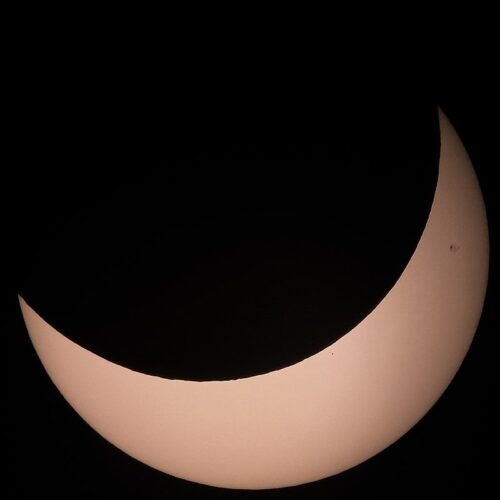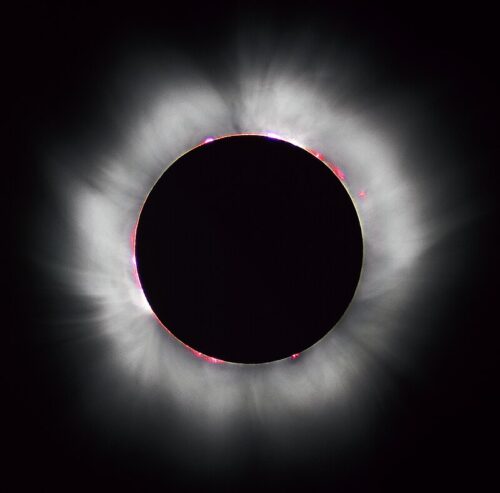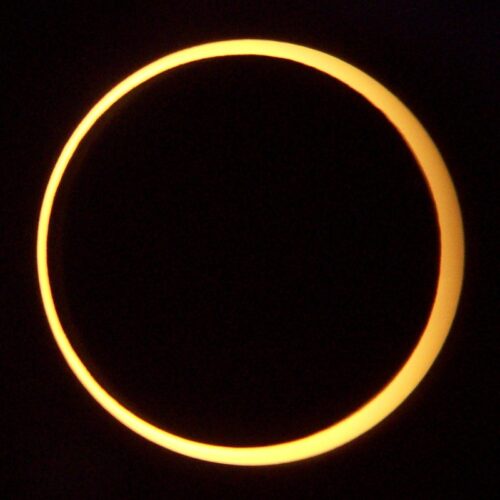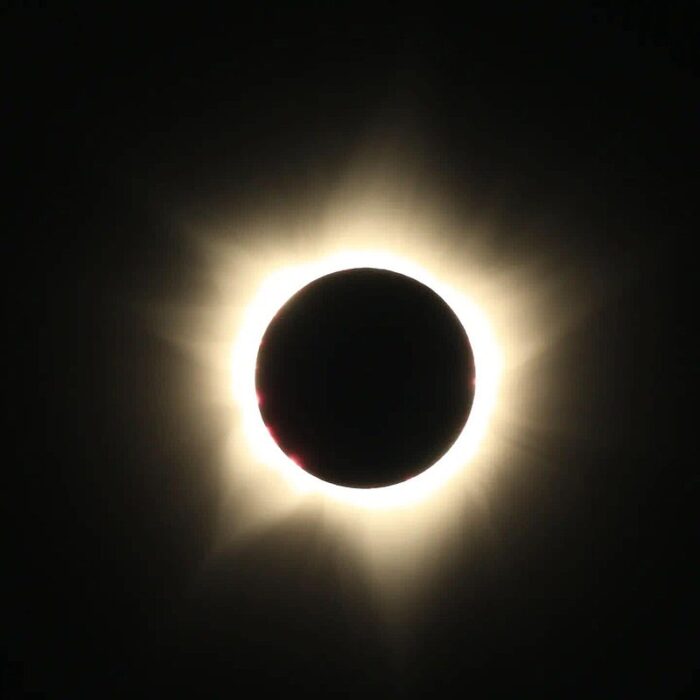Any solar eclipse—when the Moon passes in between the Sun and the Earth—is an amazing event.
And a total solar eclipse? When the Moon completely blocks the Sun? Well, that's even cooler!
It is also, of course, something to approach with extreme caution. While it is never safe to look directly at the Sun, this is especially true during an eclipse. As the sky darkens, our pupils naturally open wider to try to capture as much light as possible. In doing so, though, they absorb a lot of damaging solar radiation, which can quickly cause blindness.
Definitely not something to mess around with!
Fortunately, we can use cameras to safely watch a solar eclipse in all of its majesty. This includes solar eclipses that happen on the other side of the world.
Last Thursday, when a few lucky parts of the Southern hemisphere in southeast Asia and western Australia got to witness an extremely rare type of total solar eclipse.
A hybrid total annular solar eclipse!
What is that exactly? We will explain! But first, have a look!
Totality from the Exmouth Gulf #SolarEclipse2023 pic.twitter.com/VBoloAPuI4
— Chris Lewis (@a_film_maker) April 20, 2023
A ring of fire!
Cool, right? But what makes this eclipse such a rare thing? Let's look at the types of solar eclipse.

A partial solar eclipse. (Wikimedia Commons)
In partial solar eclipse, the most common type, the Moon simply passes in between the Sun and the Earth. It blocks out some of the rays, but not all.

A total solar eclipse. (Wikimedia Commons)
During the total solar eclipse, the Moon's path takes it completely across the Sun. When it reaches totality (full blocking) all that is visible is the corona, or the atmosphere around the Sun.

An annular solar eclipse. (Wikimedia Commons)
In an annular solar eclipse, the Moon moves evenly across the Sun, but it is too far away to completely block the Sun. Instead, a ring of fire is visible around the Moon.
Two at once
Now, any solar eclipse is a special event. And even when a total eclipse is happening, it can only be seen in certain parts of the world. This is because you need the exact viewing angle from the Earth's surface for the Moon to fully block out the Sun. In other parts of the world, you would only see a partial eclipse ... or no eclipse at all!
But last week's was a very rare combination. The eclipse shifted between being total and annular. That's really quite something!
And above all, it is a reminder that space is full of stars and moons and planets, all in constant motion. It is so fascinating!
If you have the time, we recommend spending some time with the video below of NASA's livestream of the eclipse from Australia, one of the best places to have seen this last eclipse. Though the video is two hours long, you can skip to around 58 minutes in to see the eclipse begin.
Beautiful, right? And if you live in North America, there's a total solar eclipse coming this October, so get ready!
 An image of last week's solar eclipse as seen from East Timor, a country in southeast Asia. (Wikimedia Commons/Direção Nacional Metereologia e Geofisica DNMG)
An image of last week's solar eclipse as seen from East Timor, a country in southeast Asia. (Wikimedia Commons/Direção Nacional Metereologia e Geofisica DNMG)









